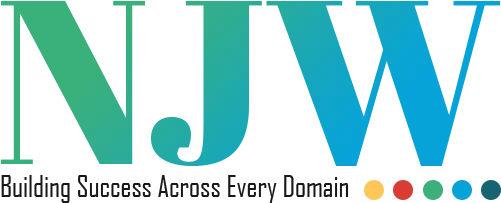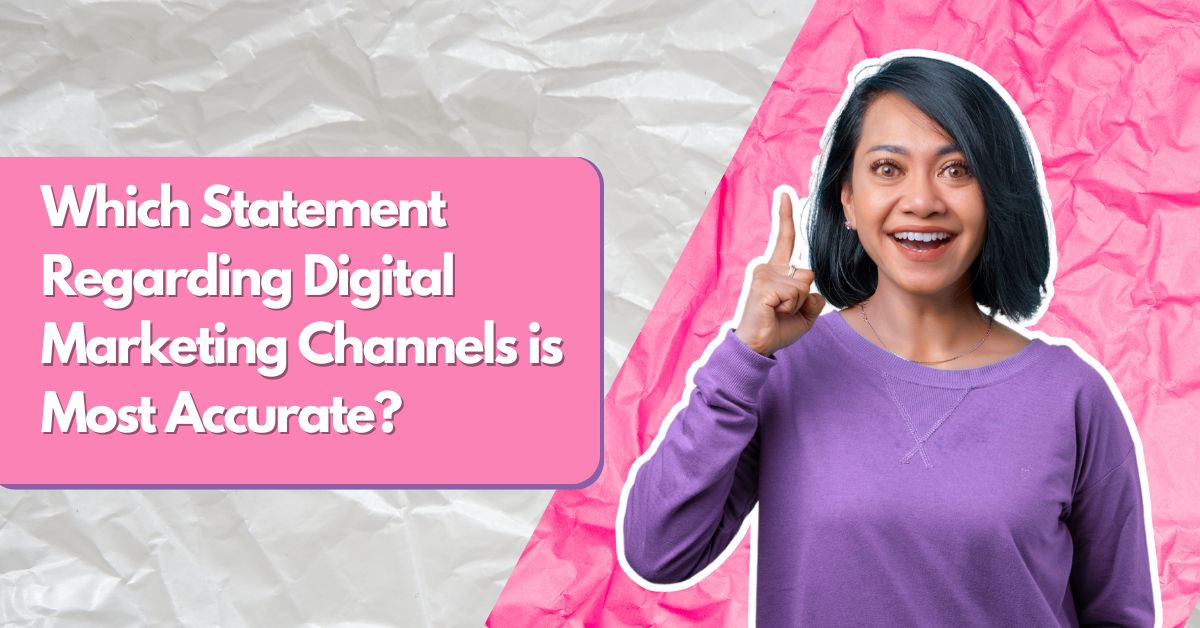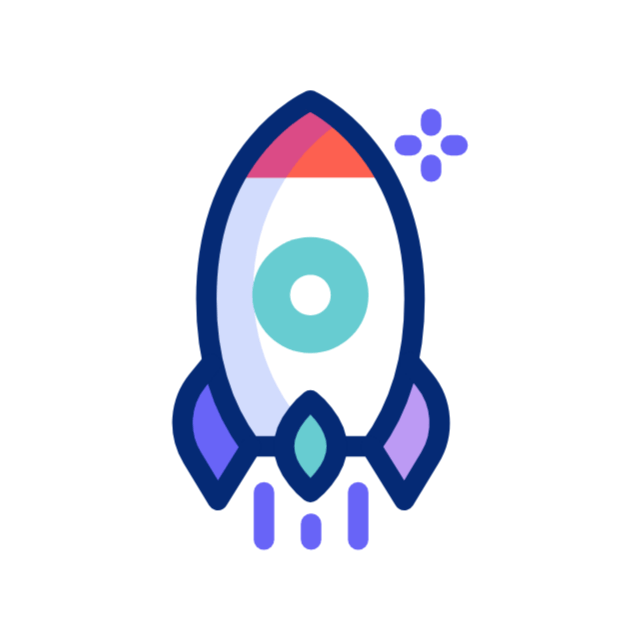Which Statement Regarding Digital Marketing Channels is Most Accurate?
Digital marketing plays a huge role in helping businesses grow. Whether you are a small shop owner or run a large company, marketing your products or services through digital platforms is necessary to reach your customers.
But with so many channels available—like social media, email marketing, SEO, pay-per-click (PPC), and more—people often ask: Which statement regarding digital marketing channels is most accurate?
The simplest and most accurate statement is:
“Different digital marketing channels serve different purposes, and the best results come from using a mix of them based on your goals.”
We will explore what digital marketing channels are, the purpose of each, and why no single channel is best for all businesses. We’ll also explain why using a combination of channels brings better results.
What Are Digital Marketing Channels?
Digital marketing channels are online tools or platforms that businesses use to promote their products or services. These include search engines, social media platforms, websites, emails, mobile apps, and more.
Think of these channels like different roads leading to the same destination—your customer. Each road is unique. Some are fast but expensive, some are slow but trustworthy, and some are best for certain situations.
These channels help businesses:
- Attract new customers
- Keep in touch with existing customers
- Build trust and brand awareness
- Drive traffic to websites
- Increase sales
Common Digital Marketing Channels
Let’s take a look at the most used digital marketing channels and what they are best at.
| Channel Name | Purpose | Best For | Speed of Results |
|---|---|---|---|
| SEO (Search Engine Optimization) | Improve website visibility on Google and other search engines | Long-term traffic growth | Slow (takes time to build) |
| PPC (Pay-Per-Click) | Paid ads that appear at the top of search results | Quick visibility, especially for new websites | Fast |
| Email Marketing | Send messages directly to your customer’s inbox | Retaining customers, promoting offers | Medium |
| Social Media Marketing | Use platforms like Facebook, Instagram, X (Twitter), and LinkedIn | Brand awareness, engaging with customers | Medium to Fast |
| Content Marketing | Create valuable content like blogs, videos, or guides | Build trust, improve SEO, help with branding | Slow to Medium |
| Affiliate Marketing | Pay others (affiliates) to promote your product | Expand reach without upfront ad costs | Varies |
| Influencer Marketing | Use popular online personalities to promote your product | Brand exposure, trust-building | Fast |
| Mobile Marketing | Reach users through SMS, mobile apps, and notifications | Instant offers, updates, and promotions | Fast |
Why One Channel Is Not Enough
Many people think they only need one marketing channel, like SEO or Facebook ads, to grow their business. That’s not true. Every channel has its strengths and weaknesses. Depending only on one channel can be risky. For example:
- SEO takes time. If you only use SEO, you might wait months before seeing results.
- PPC ads are fast but expensive. If your budget runs out, the traffic disappears.
- Social media is great for engagement but doesn’t always lead to sales.
- Email is powerful but only works well if you already have a customer list.
That’s why the most accurate statement about digital marketing channels is:
“Use a mix of marketing channels to get the best results for your business goals.”
This approach is called an integrated marketing strategy.
Matching the Right Channel to the Right Goal
Choosing a channel depends on your goal. Here are a few examples:
- If your goal is brand awareness, social media and influencer marketing work well.
- If you want immediate traffic and leads, PPC is fast and effective.
- If you want long-term growth, SEO and content marketing are your best friends.
- For customer loyalty, email marketing is ideal.
Each goal may require a different path. You can combine them smartly for better impact.
Example: A Small Online Store
Let’s say you start an online store selling handmade candles. Here’s how different channels can help:
- Use SEO to write blogs like “Top 10 Handmade Candle Scents” to attract search traffic.
- Run PPC ads to quickly show your products when people search “Buy handmade candles.”
- Post candle pictures and videos on Instagram and Facebook to gain attention.
- Send email newsletters to customers with discount codes or tips on using candles.
- Use influencers in the home décor space to review your products.
By using all these together, your brand becomes stronger, more visible, and trusted.
A Word About Analytics
Using different channels is great, but tracking their performance is key. Tools like Google Analytics, Facebook Ads Manager, and email tracking systems help you know what’s working.
With this data, you can:
- Adjust your budget
- Focus on what brings the most value
- Stop wasting money on channels that don’t perform
- Learn more about your customer behavior
Digital marketing is not just about being online—it’s about being strategic.
Benefits of Using Multiple Channels
- More Exposure – You appear everywhere your customer looks online.
- Better Conversion – Customers who see your brand many times trust you more.
- Flexibility – If one channel underperforms, others still support your goals.
- Greater Learning – You collect more data, helping you improve faster.
For example, Google is not just a search engine. It’s a powerful ad platform through Google Ads. Similarly, Facebook is not just a social media app but a business tool for targeting specific customers.
Real-World Example: Amazon
Amazon doesn’t rely on just one channel. It uses:
- Google Ads for product visibility
- Email marketing for order updates and product suggestions
- Social media for engagement
- SEO to appear in search results for products
This mixed approach has helped Amazon become a top e-commerce brand.
Final Thoughts
To summarize:
- Digital marketing channels are tools that help you reach your audience online.
- No single channel is the best. They all have different benefits depending on your goal.
- The most accurate approach is to use a mix of channels tailored to your business.
- Tracking and analytics are important to make smart decisions.
- Consistency across all channels creates trust and brand power.
You don’t need to be on every platform, but you do need a strategy that combines the right ones. Over time, your brand becomes more visible, more trusted, and more successful.
If you’re just starting, begin with 2-3 channels and grow from there. With practice and tracking, you’ll see which ones work best for you.
Also Read:
- Do Digital Marketing Agencies Create Content?
- Are Digital Marketing Agencies Worth It?
- What Does a Digital Marketing Account Manager Do?
- What is MRR in Digital Marketing?
- Is Digital Marketing Legit?
Frequently Asked Questions
What is a digital marketing channel used for?
A digital marketing channel is used to promote products or services online. It helps businesses connect with customers through platforms like Google, Facebook, emails, and more. Each channel works differently and can help with visibility, engagement, traffic, or sales depending on the goal.
Which digital marketing channel is best?
There is no single “best” digital marketing channel. The best choice depends on your business goal. For quick results, PPC is great. For long-term growth, SEO is better. A mix of channels like social media, email, and SEO usually gives the most effective results.
Why use multiple digital marketing channels?
Using multiple channels helps you reach more people in different ways. It increases your brand’s visibility, builds trust with customers, and improves the chance of getting sales. If one channel doesn’t perform well, others can still bring results. It’s a smarter and safer strategy.
How does SEO differ from PPC marketing?
SEO (Search Engine Optimization) is free but slow—it helps your site appear in Google search results over time. PPC (Pay-Per-Click) costs money but gives faster results by placing ads at the top of search pages. Both are useful for different business needs.
What is the purpose of social media marketing?
Social media marketing helps you connect with customers where they spend their time. It builds brand awareness, allows direct interaction, and drives traffic to your website. It’s also great for sharing updates, promotions, and building a loyal community around your brand.


